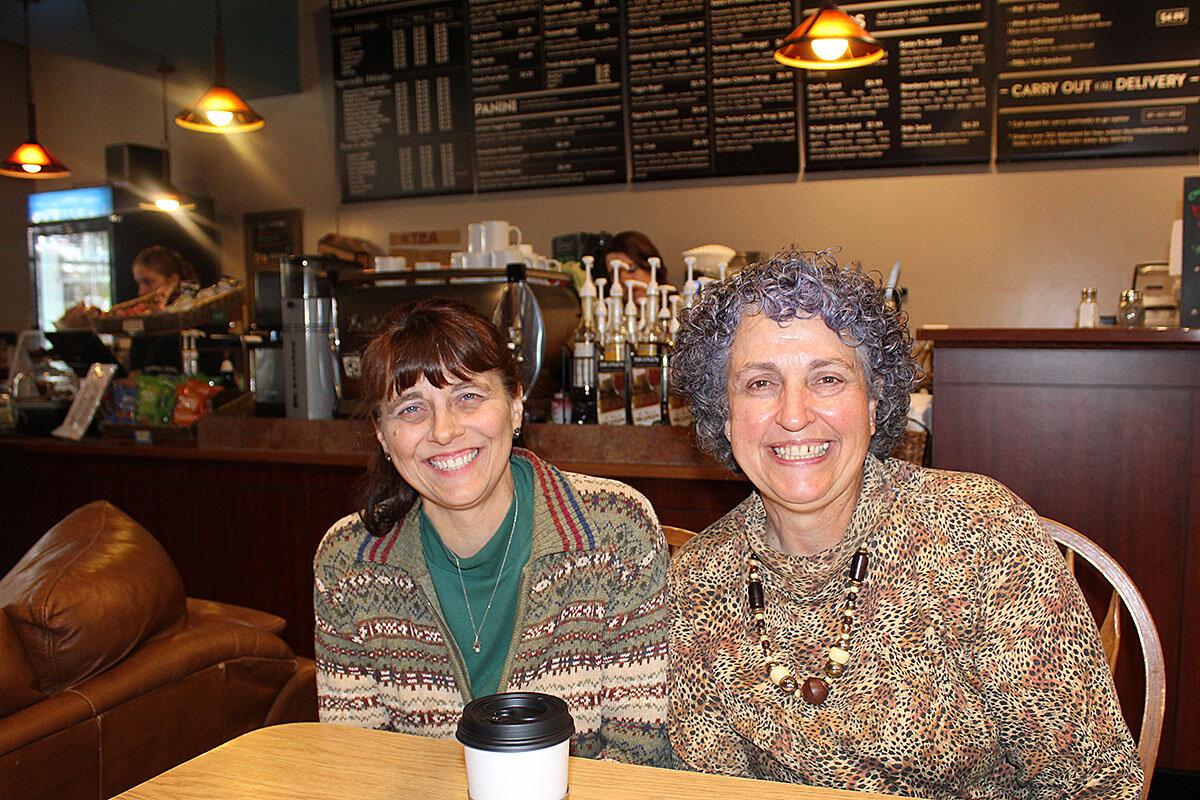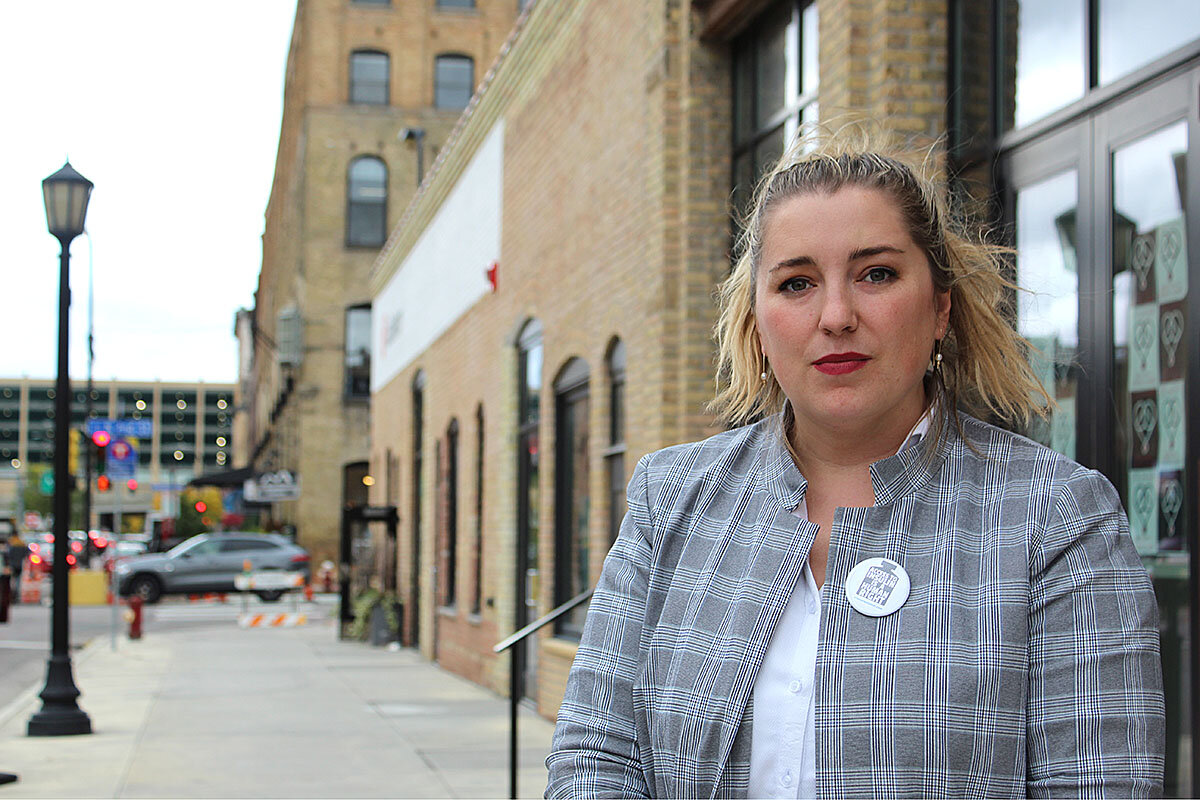Democrats are winning in suburbs. In rural America, it’s another story.
Loading...
| Minnesota’s Carlton and Rice Counties
At the Third Base Sports Bar on the edge of town in Carlton, Minnesota, Linda Luomala, a retired paper mill worker, orders fried cheese curds without looking up from her stack of pull-tabs, the state lottery tickets that look like paper slot machines.
If Democrats want to get back to winning in rural areas, says Ms. Luomala, dropping the unlucky pull-tabs to a growing mound at the base of her bar stool, then they need to get back to basics. Minnesota’s Democratic-Farmer-Labor Party (DFL) has forgotten about farmers and laborers, she says, focusing instead on issues that feel secondary.
Her friend, Anna Lind, a railroad conductor, nods in agreement. Like Ms. Luomala, Ms. Lind says she always votes Democratic. But in 2018 she voted for a Republican congressman, after he was endorsed by her union.
Why We Wrote This
In Minnesota, two congressional districts symbolize a quandary for Democrats: Rural residents have felt increasingly that the party has lost interest in the “kitchen table” issues that affect small and struggling communities.
With the nation’s longest Democratic voting streak in presidential elections, Minnesota has long been a cornerstone of the Democrats’ midwestern “blue wall.” But the state has been shifting more Republican in recent years. In 2016, President Donald Trump lost Minnesota by just 1.5 percentage points, with two of the country’s largest Obama-to-Trump swings happening in Minnesota’s 1st and 8th Congressional Districts. In 2018, those same districts were two of just three nationwide that Republicans managed to flip during the Democrats’ “blue wave” of victories.
The Trump campaign has made clear it sees Minnesota as a top pickup opportunity in 2020, in large part because of the state’s sizable rural population.
When explaining their political motivations – and frustrations – voters in these districts talk first about jobs. Minnesota’s 8th, a manufacturing and mining hub in the northeast corner of the state known as the Iron Range, and Minnesota’s 1st, a sea of cornfields that stretches across the state’s southern border from South Dakota to Wisconsin, have both seen their local economies shrink over the past few decades.
Underpinning these concerns is a deep value for community. A lack of jobs affects the size and vibrancy of their communities, residents say, because shuttered farms or downsized factories mean neighbors financially suffer, are forced to commute to “the cities,” or move away.
“In the city, if you lose a job you can go down the street and get a new one. But we have so little options,” says Ms. Lind. “Everybody here is focused on keeping their town a town.”
The rural-suburban tradeoff
Rural America was pivotal to President Trump’s 2016 win. According to exit polls, more than 60% of rural areas voted for Mr. Trump, a greater share than went for previous recent Republican presidential candidates. As of September, the president’s approval rating in rural parts of the Rust Belt and Great Plains states (including Minnesota) was 55%, more than 10 points higher than his national approval rating.
By contrast, Democrats have found increasing success in the suburbs, which helped them regain control of the U.S. House of Representatives in 2018. This trend has carried over to 2019, when suburban voters flipped six state legislature seats to Democrats in Virginia on Tuesday, and the Cincinnati suburbs in northern Kentucky helped push Democratic gubernatorial candidate Andy Beshear to an apparent victory.
In Minnesota, the Democratic Party’s two suburban pickups in 2018 were counterbalanced by the GOP’s rural pickups in the 1st and the 8th .
Those results underscore a fundamental lesson for both parties heading into the 2020 election: success is likely to hinge not only on driving up turnout in regions where you are winning – but also stopping the leaching in places where you are losing.
“Democrats aren’t going to sweep rural areas, but they have to make sure they get closer to Obama’s numbers than Clinton’s,” says Lanae Erickson, a senior vice president at the center-left think tank Third Way. “If you continue to hemorrhage rural voters, it’s going to make it harder and harder for you to make up that math.”
The question is how to do that. Ms. Erickson says Democrats should pay attention to what worked for them in 2018, when they won in swing districts by focusing on “kitchen table economics” – not Russia, or impeachment, or immigration, or guns. It’s a similar sentiment expressed by Ms. Luomala and Ms. Lind from their barstools, as well as other white, working-class voters across these small towns.
“The Democrats are kind of lost in the wilderness at the moment,” says Dan Reed, a lifelong 8th District resident, sitting in a lawn chair in his own piece of Minnesota wilderness in Kettle River. “The party is not reacting to what people want to have, which is jobs.”
‘Democrats can’t be against everything’
When Mr. Reed was growing up in Carlton County, everyone, including his own father, had cows. He guesses there used to be between 800 and 1,200 family dairy farms in Carlton, which is a two-hour drive north of Minneapolis. Today (he pauses to count silently in his head), he estimates there are around four.
Minnesota’s 8th District is bigger than the entire state of West Virginia. Similar to coal mining communities in Appalachia, iron mining jobs are a small fraction of the state’s workforce but live large in the region’s collective consciousness – a defining part of its identity.
And as in many small Appalachian mining towns, locals here are frustrated with Democratic politicians who seem to value environmental protection over their livelihoods. This rift has intensified in the 8th District over a debate around replacing Line 3, a crude oil pipeline, that has drawn opposition from environmental activists, tribal groups, and some of the Democratic presidential candidates.
“Democrats can’t be against everything,” says Mr. Reed. “The best social program there is, is a job.”
Mr. Reed has been active with the DFL Party for 50 years, holding several official positions such as local chair. But last spring he resigned. He thinks he’ll still vote for the Democratic nominee in 2020, but he’s worried about the party’s priorities. It started to feel like the DFL was more concerned with “Facebook tirades” than his neighbors who have to commute almost two hours each way to work in the Twin Cities.
“Nolan had the right balance between jobs [and] thoughtful, regulated mining,” says Mr. Reed, referring to the 8th District’s former Democratic congressman who did not to seek reelection last year, and whose seat went to Republican Pete Stauber by more than 17,000 votes. “Now it’s like, who’s pure enough for the DFL?”
Sue Willcutt, a retired elementary school teacher who lives in Shieldsville, a small town surrounded by lakes 50 miles south of Minneapolis, has also seen her local economy stall out over the past few decades.
Minnesota’s 1st District, the southern sliver of the state, is one of the top 10 agriculture-producing districts in the country. Corn stalks bow to the wind of passing cars driving along two-lane roads, and driveways are marked by farm stands of pumpkins and gourds, with honor boxes for payment.
Many of these farmers have taken a hit from the president’s trade war with China, with tariffs that by some estimates have cost Minnesota farms and businesses nearly $1 billion.
“Minnesota farmers are barely holding on by the skin of their teeth,” says Ms. Willcutt, who grew up on her parents’ farm in Jeffers, and is vice chair of the Rice County DFL Party. Her sister and brother-in-law took over her father’s farm in the southwest corner of the 1st District, but they have a “constant relationship” with the bank, she says, borrowing money every year to jumpstart their hog, corn, and soybean production.
As in the 8th, many voters here are unhappy with the environmental regulations coming from the DFL. Former DFL Gov. Mark Dayton “antagonized” a lot of farmers, says Ms. Willcutt, with his efforts to reduce nitrate runoff from fertilizer, as well as legislation requiring “buffers” between farmland and waterways.
Janalee Cooper and Rita Olson, co-administrators for the Rice County Republicans Facebook group, say support for President Trump in southern Minnesota is stronger than ever. They say the Democrats’ focus on impeachment in Washington, and the far-left agenda of lawmakers like Minnesota Rep. Ilhan Omar, who represents Minneapolis, has been a boon to the local Republican Party.
Recently, some unions have endorsed local GOP candidates. “That’s just unheard of in Minnesota,” says Ms. Olson, sitting in a coffee shop in Northfield.
Ms. Cooper comes from a long line of DFL voters, but says her politics shifted after she became a small business owner. Her mother has become a Republican as well. “When people say Minnesota is turning red, I absolutely believe it,” she says.
‘We chose to be here’
After the 2016 election, Ms. Erickson and Third Way conducted some voter interviews in small Midwest towns. She still remembers one comment from a voter in rural Michigan.
“He said, ‘A lot of time it sounds like Democrats don’t care if my town lives or dies,’” says Ms. Erickson. “We have to show that we care about these communities too.”
To take back areas like Minnesota’s 1st and 8th Districts, Democrats may need to rethink both the style and substance of their message, say locals. For example, acknowledge the effect one struggling family farm can have on the community, and then get on the ground and talk about solutions.
“Be involved in local parades, fairs, pancake breakfasts,” says Ms. Willcutt. “If people here can meet you, they have a different feeling about you.”
Quinn Nystrom says this is her strategy for taking back the 8th in 2020. The lifelong northern Minnesotan and health care activist announced her candidacy for the district’s Democratic primary in early October. She says she plans to have honest conversations in every community in the district.
“[Rural voters] have things to offer, they have topics they want to contribute to the party, and sometimes their voices have not been given a seat at the table because it’s just considered ‘rural,’” says Ms. Nystrom. “There’s not a hierarchy of cities.”
Ultimately, she hopes the Democratic party will actively work to convey more respect for rural voters. In Minnesota, she notes, city dwellers sometimes refer to regions outside of the Twin Cities as “outstate” – a term she finds derogatory.
“You can call us ‘rural Minnesota,’ but we’re not ‘out’ of anywhere,” says Ms. Nystrom. “We chose to be in this area.”
[Editor's note: The original story incorrectly identified the Nov. 2018 winner of the 8th district. The winner was Republican Pete Stauber.]








